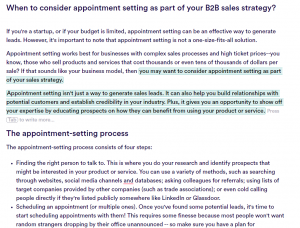Shifting priorities wreak havoc on our best intentions as martech buyers so it’s important to take the time to plan and avoid random acts of martech.
It’s easier to buy than to manage when it comes to marketing technology. While finding a solution to a problem isn’t always a cinch, there’s far more to incorporating it than simply procuring it. This is what my counterparts and I will discuss at the MarTech East conference in Boston during our session: “Avoiding Random Acts of MarTech: Creating a Process for Acquiring New Marketing Technology.” Over the last couple of years, my team and I at Western Governors University have aspired to make sure that we address a variety of important topics to help ensure that we will enjoy a greater return than what we’ve invested in various tools.
When we consider tools to buy, we want clear research and documentation so we can focus our attention on how our team implements and actually uses them to advance our goals. We found a plan – from purchase to implementation – that includes these considerations ensures we get the most for our money:
- Organizational Readiness – In many cases, development work is required. Do priorities and roadmap align with contract dates? It’s a waste to pay for something that one can’t use yet.
- Dedicated Owner – It is important for any tool or service to have an internal person who is assigned to champion it. They need to monitor its performance, advocate for its needs, evangelize how it can help others in the department and continuously determine its value to the department.
- Integration Needs – The vast majority of martech tools don’t operate independently. They typically either require interaction with or feed other systems. It may serve as an anchor or as a tool that boosts an anchor’s performance. Before purchasing any tool, it is important to consider how it will fit in with the existing stack. Are off-the-shelf integrations available? How robust are these connections? Will your organization need to develop its own?
- Quality of Input – If you have a tool that algorithmically automates paid search bidding, is your website analytics and attribution data that the AI relies upon up to snuff? As they say: “Garbage in, garbage out.”
- Staff Expertise – Do you have people on staff who have the expertise to actually use a tool? If not, are you willing to train them? Or should you hire someone with those skills already in place? Here’s something to consider: If you have someone learn a product on the job without formal consultation from experts, then you will risk configurations that will cause problems down the line with
upgrade , integration and vendor work. - Contract/Feature Analysis – A tool may provide many wonderful features, but are you going to use all of them? If you’re not, then consider negotiating to pay only for what you’ll use.
- Competing Tool Analysis – You may identify a tool that meets your needs, but consider looking at a few of its competitors. Perhaps one of them will do a better job or fit in your stack better.
- IT and Procurement – A critical part of martech stack building and maintenance processes involve IT and procurement – regardless of whether they’re friends, frenemies or (hopefully not) foes. In many cases, IT is inevitably deeply involved (shadow IT is sometimes tolerated or embraced) in implementing and maintaining systems, particularly regarding integration and interaction with systems outside of marketing’s control. That’s why it’s crucial to loop in IT prior to executing a contract as a way to avoid potential resistance. It is also a great resource for technical efficiency and data security evaluation. In addition, procurement is another crucial stakeholder. Buyers can serve as the “villains” when it comes to budget and policies so you don’t have to. On top of that, they’ll read contracts, engage legal and take care of the stuff that’s not a marketer’s job nor expertise.
- Value – You get what you pay for. One tool may cost less than a competing solution, but do they have similar service level agreements (SLA), customer support or commitments to continual improvement? A cheaper solution may prove best for a proof-of-concept phase but may not work out well in the long run. Another thing to consider is that you’ll need your vendors to enjoy financial health in order to thrive, which will most likely benefit you. Aggressively pursuing a cutthroat rate may feel great but can handicap the vendor. Buyers in procurement should focus on value – not price – and should help make such determinations.
Many of these considerations are simple and should fall under the common-sense category, but we all know that the ideal is rarely the
Opinions expressed in this article are those of the guest author and not necessarily Marketing Land. Staff authors are listed here.
Marketing Land – Internet Marketing News, Strategies & Tips
(36)








